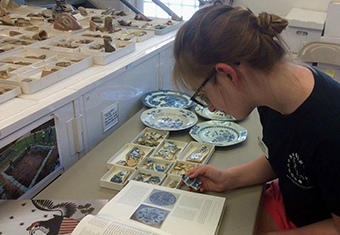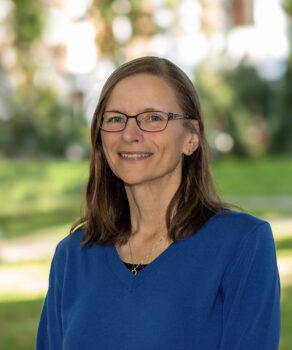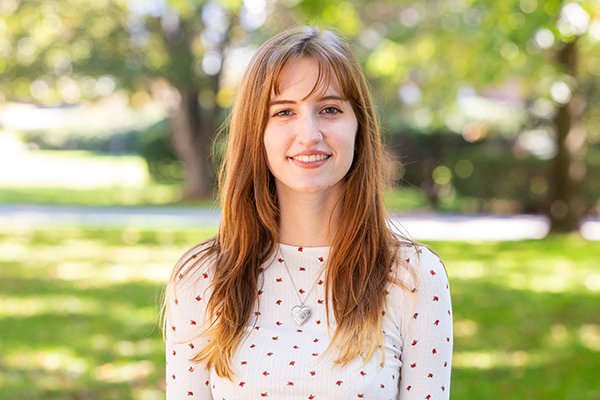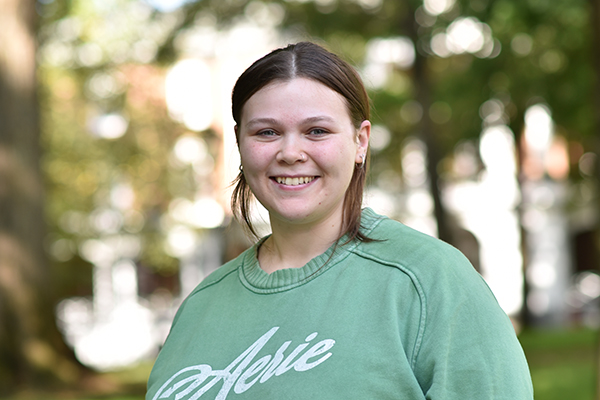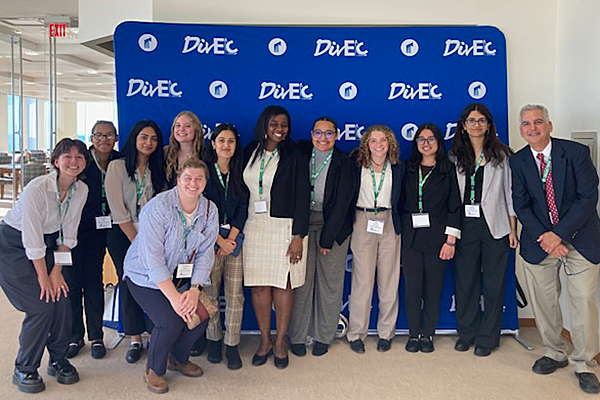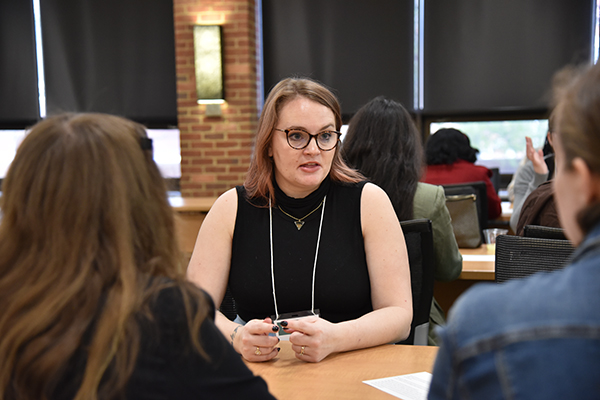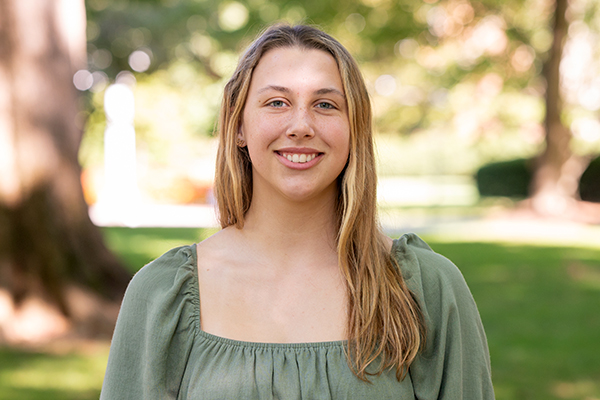With a lifelong interest in archaeology and a love of the Indiana Jones movies as her springboard, a history and classical studies double major has realized what she calls “a total dream”: working at the premier excavation site in America.
Meaghan Harrington ’19 spent six weeks performing hands-on fieldwork during the annual Archaeological Field School in Jamestown, Virginia, site of the first permanent English settlement in North America. A partnership of the Jamestown Rediscovery Foundation and the University of Virginia, the field school immerses its students in “the methods and theories of American historical archaeology,” according to the school’s website. “Students will be helping to expand our understanding of the site of James Fort (1607-1624) as well as the events of 1619, which include the first representative assembly meeting and the arrival of the first Africans.”
“It was something I always wanted to do. Ever since a fifth grade field trip I’ve been obsessed with Jamestown,” Harrington explains. “But I didn’t know if it was something I could do.”
Through extensive online research, Harrington discovered that UVa offered the chance to conduct archaeological research in Jamestown. “I decided to apply to their field school as a result of the confidence I’d gained at Hollins and the encouragement of my professors, who said it was something that would benefit me in the long run.” She went through a rigorous and selective application process to become one of only 13 students accepted for the 2017 summer session. She worked primarily outside the James Fort at a site where archaeologists have speculated colonists may have established a tent city due to a lack of space inside the fort.
“We dug. We did a lot of digging,” Harrington recalls. “We would go from 8 a.m. to 4:30 p.m. every day except for one day devoted to lab work. And it was hot – I’m immune to the heat now!”
She says she and her fellow student archaeologists didn’t find evidence of the tent city, but did gather thousands of artifacts. “Everyone says that every shovel full of dirt will give you an artifact. That’s an understatement. It’s at least ten artifacts. I was so surprised, but that’s what’s remarkable about Jamestown. True excavations didn’t really start there until the late 1990s.”
Harrington was the second-youngest person in her work group. “It should have been an intimidating environment because all the other field students were in graduate school. But because of Hollins, where you’re encouraged to dive head-first into things and we do so much research already, I was prepared.
“As the culmination of our field school experience, we had to complete a research project and present it to the entire Jamestown staff – all the archaeologists, curators, museum staff, everyone. If I hadn’t learned research and had that experience as a history major at Hollins, I would have been lost.”
Harrington says her time in Jamestown was life-changing in several ways. “I don’t think I understood teamwork until I went there, and even though I’m not completely certain I want to be an archaeologist, Jamestown has given me so much more direction.”
Next spring, Harrington will be studying abroad in Ludwigsburg, Germany, and spending February and March interning at the American Center of Oriental Research in Amman, Jordan. “I’m not sure yet what exactly I will be doing with that internship,” she says, “but I really like working hands-on with the material culture.”
Photo caption: Meaghan Harrington ’19 examines artifacts unearthed at the Jamestown excavation site near James Fort.
Stay up-to-date on university news. Sign up for the bi-monthly Hollins News email.



